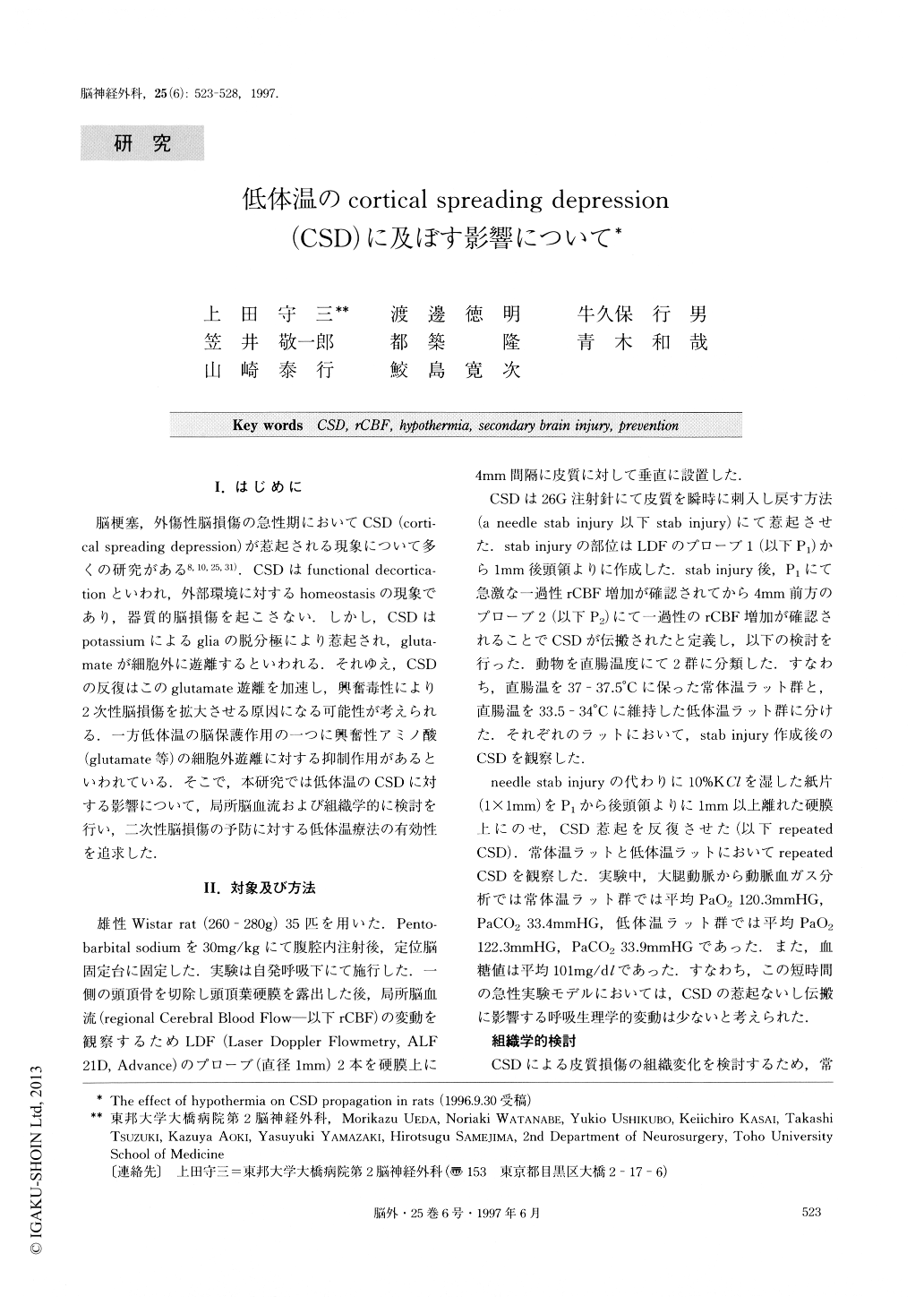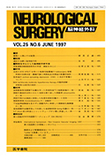Japanese
English
- 有料閲覧
- Abstract 文献概要
- 1ページ目 Look Inside
I.はじめに
脳梗塞,外傷性脳損傷の急性期においてCSD(corti—cal spreading depression)が惹起される現象について多くの研究がある8,10,25,31.CSDはfunctional decortica—tionといわれ,外部環境に対するhomeostasisの現象であり,器質的脳損傷を起こさない.しかし,CSDはpotassiumによるgliaの脱分極により惹起され,gluta—mateが細胞外に遊離するといわれる.それゆえ,CSDの反復はこのglutamate遊離を加速し,興奮毒性により2次性脳損傷を拡大させる原因になる可能性が考えられる.一方低体温の脳保護作用の一つに興奮性アミノ酸(glutamate等)の細胞外遊離に対する抑制作用があるといわれている.そこで,本研究では低体温のCSDに対する影響について,局所脳血流および組織学的に検討を行い,二次性脳損傷の予防に対する低体温療法の有効性を追求した.
In the cortical zone surrounding an ischemic or traumatic focus, CSD is a transient phenomenon involv-ing interstitial ions, blood flow and metabolism and is believed to be completely reversible. However, it may extend to secondary brain injuries because CSD re-leases excitatory amino acids into the extracellular space. In order to prevent secondary brain injuries, it may be effective to block repeated CSD. This study was designed to determine whether hypothermia can block CSD propagation and whether this study is a potentially useful means for preventing secondary brain injuries. Male wistar rats weighing 270g on average were used for the experiments. The animals were divided into two groups:hypothermic rats (33.5-34℃, rectal temp.) and normothermic rats (37-37.5℃) . The changes in rCBF (regional Cerebral Blood Flow) were monitored in order to observe CSD. LDF (Laser Dop-pler Flowmetry) was used to measure rCBF. The two LDF probes were placed on the parietal cortex (4mm apart). To elicit CSD, a needle stab injury was made on the cortex or a peice of paper soaked with 10% KCl was applied on the cortex. The velocity of CSD prop-agation was more prolonged in the hypothermic rats than in the normothermic rats (p<0.01). There were smaller numbers of repeated CSD in the hypothermic rats than in the normothermic rats. Histological ex-amination of the cerebral cortex revealed shrinkage neurons more distinctly in the normothermic rats than in hypothermic rats. From these results, we can specu-late that hypothermia may block CSD propagation and that hypothermic therapy has the potential to prevent secondary brain injuries.

Copyright © 1997, Igaku-Shoin Ltd. All rights reserved.


